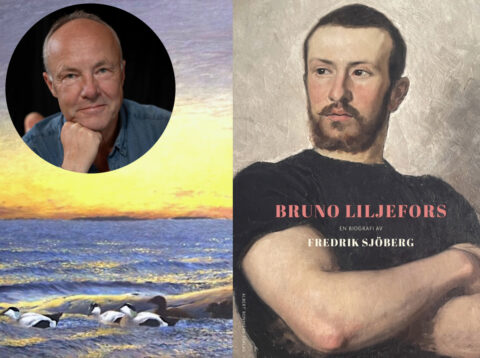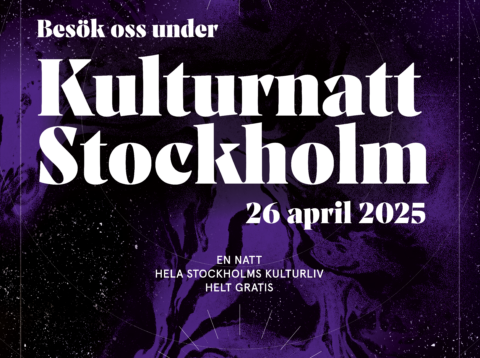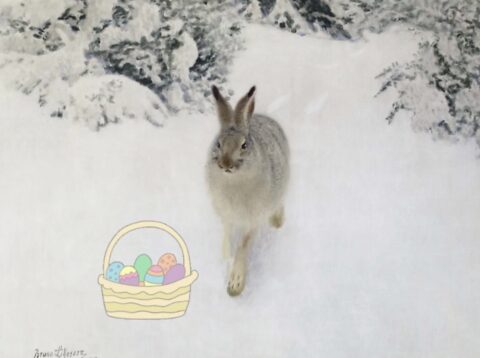Carl Kylberg – With colour beyond the surface
Flowing brushwork and vibrant colours distinguish the Swedish artist Carl Kylberg’s (1878-1952) paintings of landscapes, figures and still lifes. He combined his artistic practice with a spiritual quest that imbues his oeuvre with an existential dimension. The dissolved shapes in his works were debated in both art and politics.
This exhibition shows parts of Kylberg’s entire body of work, from the early paintings and cartoons from the 1910s, the children’s books and more colourful paintings from the 1920s, to his famous classical motifs from the 1930s and 40s. Kylberg’s breakthrough to the wider public came late, but he is counted as a key figure of Swedish art since the 1930s. The exhibition highlights the artist role and puts his paintings in the context of the period before, during and after the Second World War.
Ernest Thiel, the founder of The Thiel Gallery, stopped collecting art after selling his collections to the Swedish state in 1924. In 1937, Thiel was asked in an interview in Nya Dagligt Allehanda, one of the national daily papers, what he thought of the latest modern art. Thiel replied that he had recently seen Carl Kylberg’s exhibition at the Royal Academy Of Fine Arts in Stockholm: “It was a revelation. Swedish art is in a promising state of development...” Thiel never bought any works by Kylberg, but there are parallels between the artist’s spirituality and Ernest Thiel’s interest in belief systems and philosophy.
Kylberg’s constant self-examination and search for meaning beyond material values still is relevant today. With the colours, the artist strives to go beyond the surface of the canvas and may even challenge our own contemporary obsession with superficial values and consumerism.
Artist, dandy and visionary
The self-portrait is a recurring theme throughout Carl Kylberg’s oeuvre. He presents himself in a variety of styles over the years. The painting from 1903 shows Kylberg as a dandy in a three-piece summer suit, with tie and cravat pin. The ornate art nouveau contours are repeated in the natural elements, the clothes and the twirling pipe smoke. The dandy was usually associated with urban settings, but Kylberg incorporated outdoor life on the Swedish west coast into his elegant style.
A completely different artist role emerges in his self-portraits from subsequent decades. The elegant surface is broken by dissolved brush strokes, and the artist’s individual features are entirely secondary. We are presented with Kylberg as an artist, in his studio in front of an easel, holding his palette, or wearing a beret. The fuzzy contours and the flowing colours are suggestive of a visionary painter. Alongside his artistic development, Kylberg studied philosophy, psychology and religion in the late 1920's.
His most famous self-portrait is The Holy Painter (1928). Kylberg described the painting in his diary: “... the strangest idea of my life – it is a paean to the light that radiates from the divine world through the painter – it is the expression of a contact.” The artist’s task, according to Kylberg, was to let art reflect a unifying force that existed beyond the surface of the material world. Painting was his ultimate tool, but his private ideas were also part of his artistic practice.
Bohemian life and creative work
The artist profession did not come immediately to Kylberg who studied architecture in Stockholm and Berlin in the 1890s, before suddenly realising that his true calling was to be a painter. He enrolled at the Valand Art Academy in Gothenburg on the west coast of Sweden, where painter Carl Wilhelmsson was a teacher. Although he only attended the Academy for a short period, it introduced him to the city’s bohemian crowd, with local artists such as Ole Kruse, Ivar Arosenius and Gerhard Henning.
Kylberg’s caricatures of his friends give the impression of being made on site at restaurants and parties – drawing was an element of their social life. The bohemians were a colourful addition to Gothenburg and created shows, posters, cartoons and caricatures. Kylberg had been earning his living for some time with assignments and illustrations for advertising brochures, games, decorations and invitations.
His storybooks were meaningful to Kylberg on a more personal level. The children’s book format, with illustrated stories that allowed free scope to the storyteller’s imagination, attracted many artists in the early 20th century. Kylberg’s illustrations in the books Lejonet Leo (Leo the Lion) and Kalle och Ulla och Sprätten (Charlie and Ulla and the Toff), which he wrote himself, are largely similar to his cartoons, albeit in a more child-friendly version.
A sense of colour
Art was changing rapidly in Europe in the first decades of the 20th century, and Kylberg worked a long time to find his own style. Modernist artists were described as self-fulfilling and successful, which made life miserable for those who didn’t make it. Kylberg’s descriptions of the early 1900s are full of anxiety, self-deprecation and introspection.
The subjects he painted during this period – dreamy landscapes and strong figures – are far from the dominating notions of modernity and progress at the time. He shaped his own universe, where colour became increasingly independent of shape and contour. The colours are rarely straight from the tube; instead, they are blended to correspond with specific emotions. His floral still lifes and garden views also grew more abstract.
Colour had a crucial significance in Kylberg's practice; according to the artist, colour dictated both composition and drawing. While colour had an aesthetic and expressive effect, it should also have symbolic meaning. The artist sought to translate the secrets of the soul into colours. Kylberg eventually won recognition from the Swedish public, as a spiritual guide and a champion of the imagination.
Going away – and coming home
Travel is a recurring theme in Kylberg’s art. Boats moored along the shore or setting off for the horizon with hoisted sails, or on the stormy sea – like The Flying Dutchman. His subject matter seems to be about dreaming of distant places, but also a longing for an inner journey, a spiritual quest. The quotidian scenes, with flowers and sunbathers, also seem to be aspects of life’s journey, with brush strokes in every direction across the canvas. Kylberg had houses in different parts of neighbouring Denmark, where he found inspiration. The landscapes, where sky, sea and land meet, exude a strong presence in the now.
Sweden’s art scene in the 1930s was characterised by artists forming groups. Kylberg was not the only one to keep their distance but he was soon perceived as an odd man out with a style entirely his own. It was hard for him to find suitable frames for his singular works. Therefore, his wife, Ruth, made the frames herself out of rough laths that were sandpapered and painted.
Although the minimalist ideals of functionalism dominated Swedish architecture and design at the time, it did not have the same broad impact on art. Several commentators who praised the rational and utilitarian quality of functionalism appreciated Kylberg’s evocative art. The Swedish art critic Gustaf Näsström wrote that it was needed as a complement “for spiritual balance – in a free visual art with room for feeling and imagination”. The mysticism of the paintings was highlighted as a social value in itself, contributing to society by being spiritually stimulating. Kylberg’s paintings were considered to open up the mind to a wealth of associations.
Spirituality and art policy
The spiritual quest was instrumental in driving modern art towards an abstract imagery in the early 20th century. Many European artists turned to mysticism and occultism in their explorations of new approaches to expressing spirituality in art, often moving beyond figuration.
Carl Kylberg’s ideas were based firmly in Christian mysticism, but they were also deeply influenced by the Indian philosopher Swami Vivekananda, who proposed a universal religion that embraced all faiths of the human soul. The notion that the real world is hidden behind a veil had a huge influence on Kylberg’s art. He avoided giving his visions a closed or delimited form: “The surface of the painting must not have the finality of a message. It makes you sceptical when people express themselves too categorically.”
The figures in Kylberg’s paintings have no individual features, and even if the scenes can allude to biblical stories, their titles are more general. This open-ended approach makes it easier for viewers to identify with the motif.
In 1937, the Swedish National Museum of Fine Arts had reserved the painting The Farewell, to be acquired for the government’s art collection. But the purchase was stopped by the then minister of education, Artur Engberg, who objected to the amorphous style of the painting. Reactions were strong, comparisons were drawn between the intervention and the exhibition “Entartete Kunst”, which had been shown in Munich, Germany, the same year, where the Nazis condemned modern art as “degenerate”. The minister was widely criticised for his censorship, while others defended his action as a measure against “unwholesome” and “incomprehensible” art. The Swedish actor Tora Teje bought the painting and donated it directly to the Museum. Its subtle theme contrasts sharply with its political explosiveness.
There have been a number of heated art scandals in our own time too, accompanied by discussions about the limits for what can be called art. Carl Kylberg had radical ambitions for his art on the spiritual level, but he also challenged the political restrictions on artistic freedom.




